
I thought I would post some monuments of Spring Grove Cemetery related to the Civil War this Memorial Day Weekend. As a reminder, there are events all weekend at Spring Grove in honor of Memorial Day. Check out yesterday’s post for a brief schedule.
Civil War Section
Section 21
From the Spring Grove Cemetery website:
“As the Civil war raged on the southern and northern fronts, Cincinnatians felt that Spring Grove would make the perfect final resting place for its Ohioan casualties. The US Sanitary Commission met with Spring Grove's Trustees to request a donation of a 100-foot diameter circular lot with a 300 grave capacity. Spring Grove obliged and it filled quickly. Two more areas were then purchased. Today, there are three burial sites consisting of concentric rows of 333 burials (totaling 999) marked by small marble squares set into the turf. Both Confederate and Union soldiers - from 9 different states - are buried here, plus 28 unknown soldiers. An officer's body lies at the center of each mound as if commanding the army of the dead.”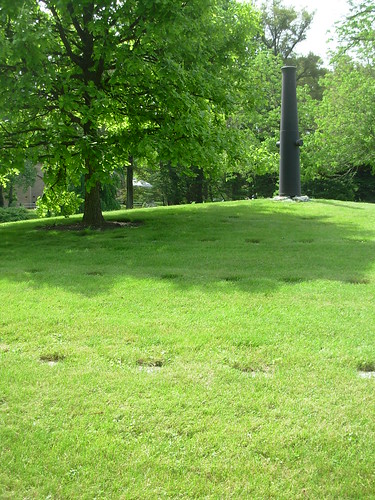
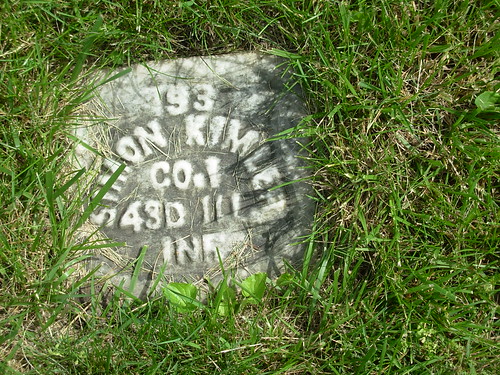
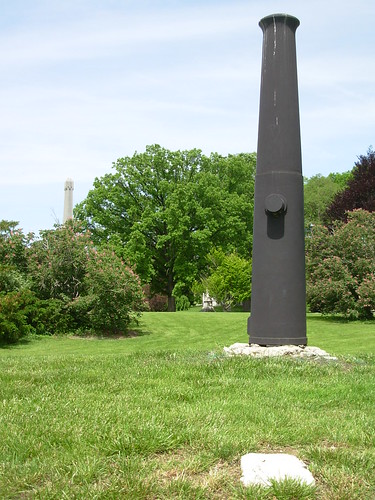
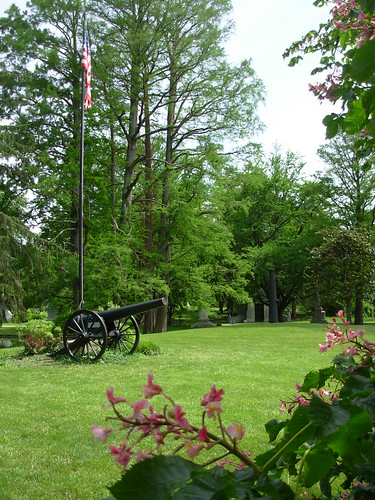
Major General Joseph Hooker
Section 30, Lot A
November 13, 1814 - October 3, 1879
Civil War Section
Section 21
From the Spring Grove Cemetery website:
“As the Civil war raged on the southern and northern fronts, Cincinnatians felt that Spring Grove would make the perfect final resting place for its Ohioan casualties. The US Sanitary Commission met with Spring Grove's Trustees to request a donation of a 100-foot diameter circular lot with a 300 grave capacity. Spring Grove obliged and it filled quickly. Two more areas were then purchased. Today, there are three burial sites consisting of concentric rows of 333 burials (totaling 999) marked by small marble squares set into the turf. Both Confederate and Union soldiers - from 9 different states - are buried here, plus 28 unknown soldiers. An officer's body lies at the center of each mound as if commanding the army of the dead.”




Major General Joseph Hooker
Section 30, Lot A
November 13, 1814 - October 3, 1879
Probably not the most distinguished Major General of the Civil War but he is here. (Refresh your memory of ‘Fighting Joe’ at this history from the Spring Grove Cemetery website.) He is buried here in Cincinnati because beginning in 1864 he commanded the Northern Department which was the regional department for command and administrative purposes of the Unites States Army which was headquartered here in Cincinnati. Then while here he married Olivia Augusta Groesbeck, daughter of the early Cincinnati settlers John & Mary Groesbeck and the sister of Congressman William S. Groesbeck. He died of a stroke.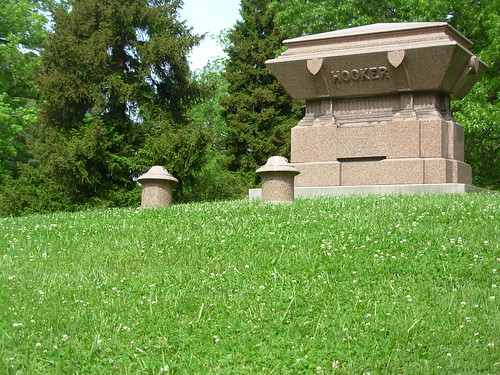
Brigadier General William Haines Lytle
Section 20, Lot I
William Haines Lytle was born on November 2, 1826. He was the only son Robert Todd Lytle who served in the Ohio State legislature and in the US House of Representative. And he was the grandson of early Cincinnati settler William Henry Lytle who came here in 1809. He was a lawyer by trade and a poet and but served in the Mexican War and ran unsuccessfully for various political offices as a Democrat. He inherited the family home, now the location of Lytle Park. With the outbreak of the Civil War, he was commissioned to service. He was mortally wounded at the Battle of Chickamauga on September 20, 1863, leading a counter attack. Scott L. Gampfer, director of history collections and preservation for the Museum Center said in a Cincinnati Enquirer article said about Lytle’s death, "Reaction to Lytle's death in Cincinnati was remarkable … It was the biggest military funeral procession in the history of the city." He never married.


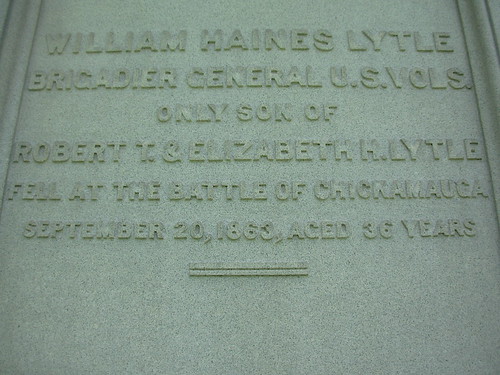

Brigadier General William Haines Lytle
Section 20, Lot I
William Haines Lytle was born on November 2, 1826. He was the only son Robert Todd Lytle who served in the Ohio State legislature and in the US House of Representative. And he was the grandson of early Cincinnati settler William Henry Lytle who came here in 1809. He was a lawyer by trade and a poet and but served in the Mexican War and ran unsuccessfully for various political offices as a Democrat. He inherited the family home, now the location of Lytle Park. With the outbreak of the Civil War, he was commissioned to service. He was mortally wounded at the Battle of Chickamauga on September 20, 1863, leading a counter attack. Scott L. Gampfer, director of history collections and preservation for the Museum Center said in a Cincinnati Enquirer article said about Lytle’s death, "Reaction to Lytle's death in Cincinnati was remarkable … It was the biggest military funeral procession in the history of the city." He never married.




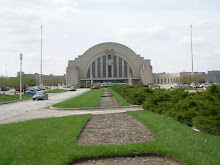.jpg)

1 comment:
I never knew about the Civil War plots, which are kinda cool. And the first shot is perfect compositionally.
Post a Comment